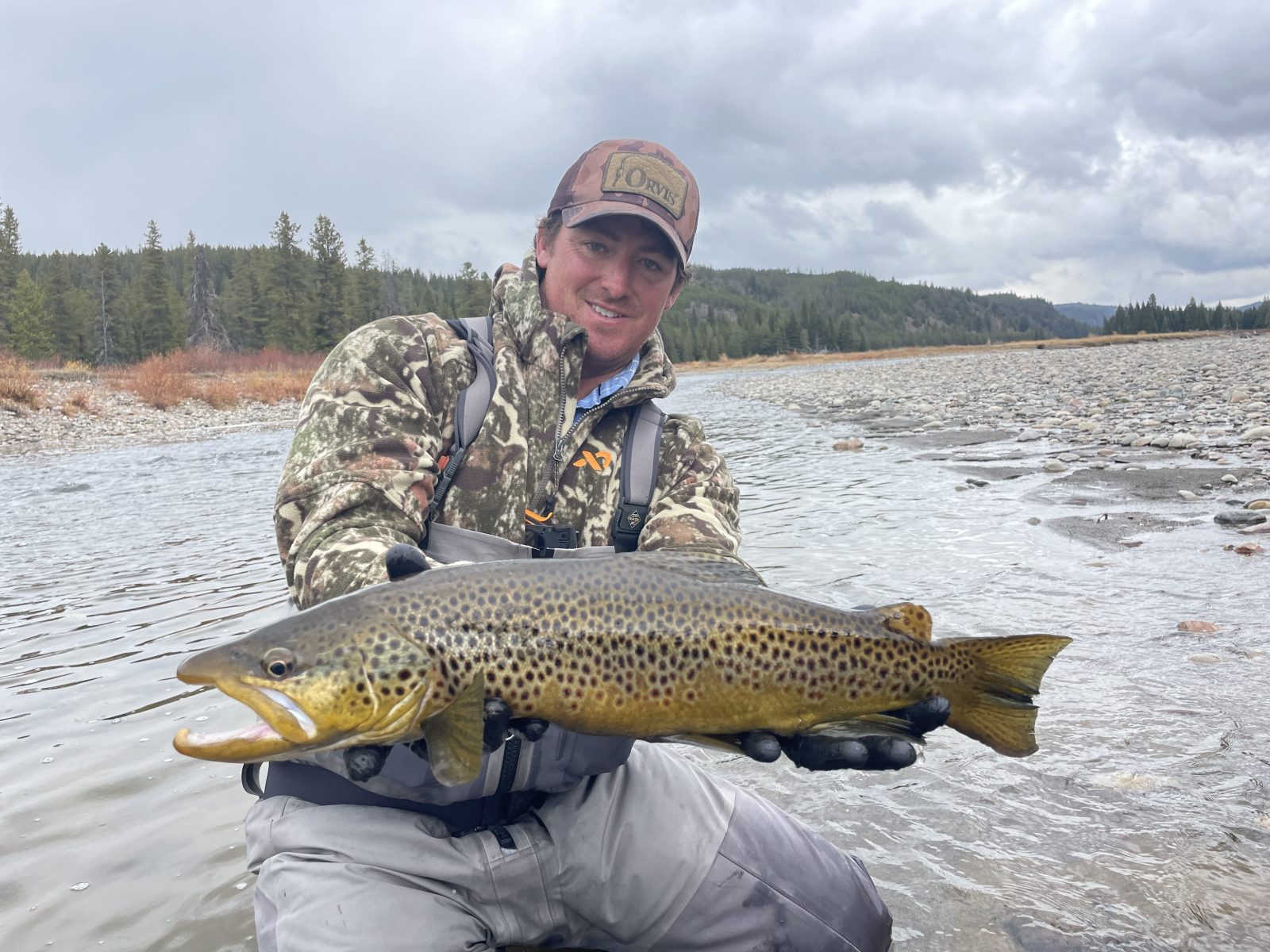
Snake River
Much better consistency with the more seasonable temps and weather in the area. BWOs and midges are the dominant hatches with intermittent October caddis popping on most reaches. Unquestionably, the lower river from Wilson down to Sheep Gulch has the more consistent production. Riffles and eddies are the prime targets at the moment with the head of riffles being the most production on dry flies. Spillway riffles flowing into side channels with slow currents are also producing well, although the timeframe of action is tighter – perhaps a two hour period from around 1:30pm to 3pm most days. Both emergent and adult imitations are working well.
Streamer fishing has stepped up big time with riffle heads producing best, followed by eddy currents and shallow banks with moderate currents. Moderately sized patterns that are neutral to dark in color are working best. The difficult issue is the sink rate. Somedays being in the three foot range of the water column with a 6ips tip is the way to go. Other days, short INT tips or sinking lines is the key with you streamer around the one to two foot range. Either way, go with retrieves that are moderate in speed for the most party. Slow down your line strips if moderate retrieves fail to produce consistently or stalls.
South Fork
Flows from Palisades Reservoir are at just under 2,000cfs. There is better surface action on most reaches with the upper section in Swan Valley fishing well with BWOs and midges, the latter of which are popping immediately in the morning and the former coming on strong from around 12:30pm until 4pm or so. The upper reaches from the Dam down to Cottonwoods have good surface action in riffles and along banks with slow to moderate currents. The lower reaches from Wolverine down to Lorenzo have good surface action in shallow riffles, eddies, and along banks with slow to moderate currents and submerged structure. Midge and BWO nymphs are working in the same water and are best fished as part of a dry-dropper rig.
Streamers are fishing best on the lower reaches from Black Canyon down to Lorenzo with eddies, seams, and submerged structure fishing best. No big difference in color by way of production but darker – black, purple, and dark olive – might be taking the cake. Fish these on floating lines or short sinking tips in the INT to 3ips range and vary up retrieves and consider pauses in line retrieves and throwing upstream mends after the initial cast.
Salt River
The Salt has remained fairly consistent over the past few weeks with decent emergences of midges, intermittent infrequen PMDs, and now BWOs. Surface action has picked up compared to a couple of weeks ago with decent dry fly action from around 10:30am until 3pm most days. While small attractors fished with a dropper remains productive, there is just as good of action on midge, BWO and PMD adult and emergent patterns. Eddies, seams, banks with slow to moderate currents, and slow current riffles are prime waters to focus on.
Flat Creek
Less than a week left before the end of season in the refuge. Flat Creek has not responded well to recent temperature and precipitation changes. There are limited hatches and just as limited surface action but there are better options subsurface with small streamers, swimming nymphs (think damsels and dragonflies), and cranefly larvae. Production is not stellar but good-sized fish can be had when actively retrieving these patterns along undercut banks, eddy current margins, and confluences with at least two and a half feet of depth. Go with floating lines and somewhere between 9 and 12 feet of leader.
Yellowstone National Park
Lewis Lake – brown trout have moved into their spawning beds in bigger numbers and there are still a good amount of fish staging and running at the inlet and the outlet. Shallow staging water – three to eight feet in depth – has been producing better than deeper water. Lake trout spawning activity continues on flats and in water of similar depths as that where browns have been staging. Small baitfish imitations – Clousers, Slump Busters, Seal Buggers – fished on hover lines or intermediate sinking links is the name of the game.
Yellowstone Lake – No big difference in production between flats and drop-offs with flats that are five to eight feet in depth slightly taking the cake. Cutthroats have been feeding primarily on baitfish imitations, although damsel and dragonfly imitations have been producing well later in the day between 1:30PM and 4PM. Intermediate sinking lines are working best with baitfish patterns. Hover lines are working better with dragonfly and damsel nymphs.
Snake River – Browns from Jackson Lake have been moving up in intermittent fashion but certainly enough to concentrate on them. In fact, we have been hooking into brown trout more so than cutthroat. With this being the case, fishing small to moderately sized streamers is the best way to go. Riffles with fast currents and slower currents along submerged structure has been the key waters to target. Floating lines are or sinking tips in the INT to 3ips range are the best way to go.